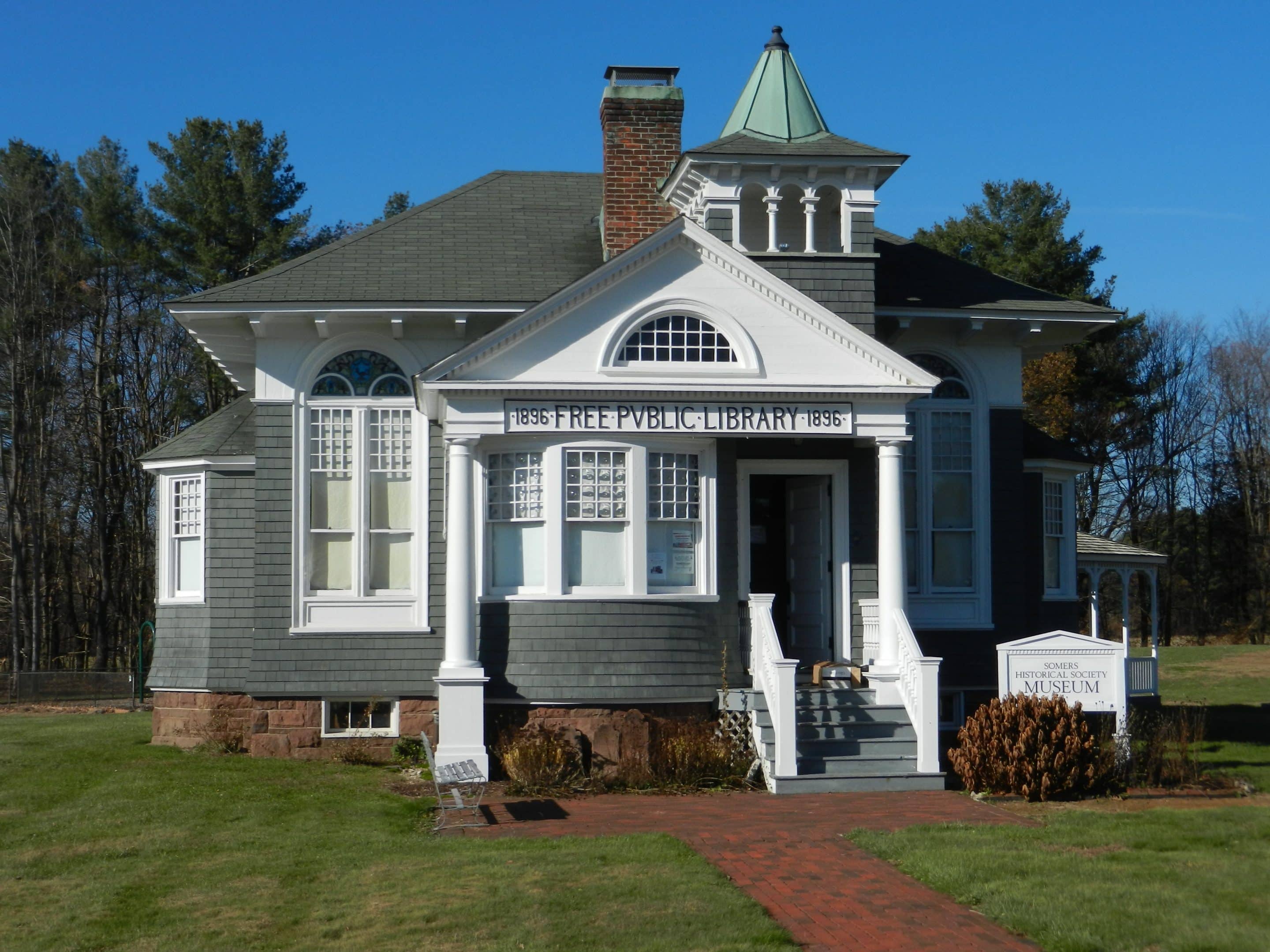The Somers Museum, which is located at 11 Battle St.
Reminder Publishing submitted photo
SOMERS — Historical treasures of all kinds from Somers and Somersville await history lovers at the Somers Historical Society Museum, which will be open on June 23 to share its collections with interested residents and inquisitive town visitors.
The museum’s collection includes genealogical archives, Somers’ artifacts, farm tools, clothing, especially Victorian, historical information and photos, historical and architectural surveys of Somers and Somersville and more.
In addition to June 23, the museum on 11 Battle St. will be open one day each month through December, including July 14, Aug. 18, Sept. 15, Oct. 20, Nov. 17, and a date to be determined in December to coincide with the town’s Christmas Tree Lighting Ceremony.
“We have a small volunteer staff which would make it difficult for us to be open every day. It also seemed sensible to condense the days to once a month so more people would fill the museum on those one days as opposed to trickling in throughout the year,” said Carole Pyne, president of the Somers Historical Society and director of the museum.
Originally from Detroit, Michigan, she moved to Somers in 1975 and eventually got involved in town events and joined the historical society to learn more about its history and culture.
“I was happy to become a member of the Somers Historical Society and always loved looking at the distinctive building which served as its home,” Pyne said.
The building that now serves as the society’s museum has its own history dating back to 1896 when it was the Somers Free Public Library. It was originally located in the center of town on Main Street and after closing in 1965 served as display and storage site for the Somers Historical Society. In 1996, it was taken off its foundation and physically transported to what is now Somers Common on 11 Battle St. It reopened in 1998 as the Somers Historical Society Museum after raising funds to build a new foundation and to complete various restoration projects.
As described by waymarking.com, “The Somers Historical Society Headquarters in a 1.5 story high Victorian style building that has a hipped roof. The building has a one bay deep entrance block with a set of stairs leading up to a portico entrance on the southeast corner of the building. To the west of the entrance is a large bay window. A pair of columns support a pediment with a fan window. The main block has tall double windows with rounded tops on both sides. A square belfry tower has an ornate open arcade and a pyramidal copper roof. A five-sided section projects from the sides.”
Pyne said, “People new in town wonder what that beautiful building is that they are seeing and come in to look at our high wood plank ceilings, stained glass, and fancy molding, while others stop in for some historical facts about the town, family members or others.”
Among the museum’s collections are old carpenter tools used from 1831 to 1910 as well as blacksmith tools from one of the original blacksmith shops in Somersville; a Boy Scout album tracing their history in Somers from 1934 to 1952, including photos and the original charter of Boy Scout Troop 83, as well as letters sent home from a Boy Scout serving in World War II; mourning jewelry from the 1900s; photographs of homes on Main Street in Somers when the historical society hired a company to take photographs and create descriptions of the old houses for a possible listing on the National Register of Historic Places; several coats made of fabric from Somersville Manufacturing Company alongside advertising posters promoting the company and its products.
Pyne noted more recent additions to the museum include four themed boards on different topics created by Donna Hanks and Yvonne Besse, both members of the Somers Historical Society.
“One of the boards is all about Somersville Manufacturing Company which made fine woolen cloth. It was owned by several generations of the Keeney family who purchased the mill in 1879. The board includes an actual invoice for woolen blankets for army members fighting in [World War] I, old photographs of workers standing in front of the company’s beautiful brick building and more. Many people come in to look for relatives who worked there,” Pyne said.
“We have some beautiful old monuments in some of the town’s cemeteries and the women found obituaries and articles on prominent residents who died, including Gene Pitney, which are included on a memorial board,” she added.
Pitney, who was a resident of Rockville but born in Hartford, was buried in Somers Center Cemetery after his death in 1967. He was an internationally acclaimed singer and songwriter known for such hits as “Town Without Pity,” “(The Man Who Shot) Liberty Valance,” and “Twenty Four Hours from Tulsa.”
There is also another board dedicated to prominent citizens and military members, including Roy Buck who lived from 1895 to 1918, for whom Boy Scout Troup 83 was named in honor of, and Tim Keeney, the current first selectman of Somers, who was part of the Apollo 17 Navy Seal splash down recovery team. A fourth board focuses on the town’s 10 school districts and their one-room schoolhouses, a few of which remain standing today, noted Pyne.
The Somers Historical Society — founded in 1962 to preserve and celebrate the history of Somers — currently has 100 members, 30 of whom are active members.
For more information on membership, call 860-749-6437.

